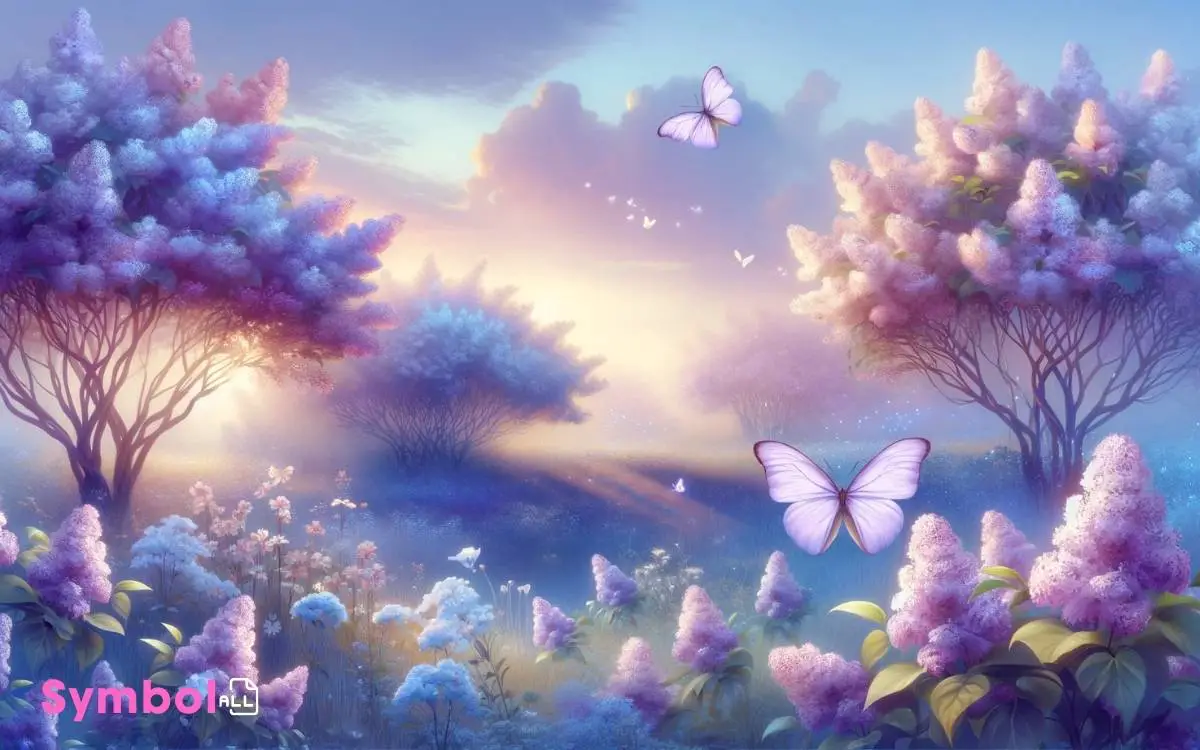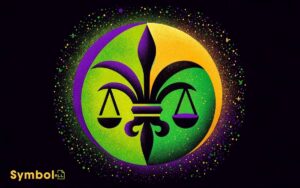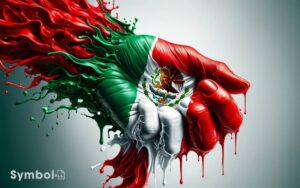What Does the Color Lilac Symbolize? Renewal, Early Love!
Lilac symbolizes a profound blend of renewal, early love, and spiritual wisdom. Hailing from various cultural backgrounds, it reflects both the beauty of love and the dignity of mourning. Analytically, you’ll find it acts as a bridge, connecting the material to the spiritual domain.
In Eastern traditions, it stands for affection and spiritual awakening a catalyst for consciousness evolution and meditation.
Emotionally, lilac promotes calmness, inspires creativity, and fosters empathy, subtly influencing mood and behavior. Its presence in fashion and design embodies timeless aesthetics, balancing innovation with nostalgia.
As you further explore lilac’s significance, you’ll uncover layers that resonate with its deep, symbolic essence.

Key Takeaways
Historical Significance of Lilac
Lilac, embodying renewal and purity, has held profound historical significance across various cultures, symbolizing everything from early love in the Victorian era to spiritual wisdom in Eastern traditions.
You’ll find its presence weaves through time, not just as a mere color but as a marker of deep-seated beliefs and values.
In the Victorian era, lilac was a medium through which unspoken feelings of love and admiration were conveyed, a tradition deeply rooted in the language of flowers.
Moving to the East, lilac’s significance shifts towards the spiritual domain, representing enlightenment and a connection to the divine.
This duality of meaning both earthly and ethereal highlights lilac’s unique position in the historical tapestry, serving as a bridge between the material world and the spiritual, between human emotions and transcendent truths.
Lilac in Cultural Contexts
Exploring the cultural tapestry of societies reveals that lilac’s significance extends beyond its aesthetic appeal, embodying complex symbols that vary distinctly across different regions and epochs.
In Eastern cultures, lilac often symbolizes love and affection, signifying the beginnings of new relationships.
Conversely, in some Western traditions, it can represent mourning or remembrance, a dual nature reflecting both the beauty and transience of life.
This dichotomy illustrates how cultural contexts deeply influence the interpretation of colors, transforming them from mere visual stimuli into carriers of profound meanings.
Analyzing lilac’s cultural significance offers insight into how societies attribute emotional and symbolic values to colors, highlighting the intricate ways in which humans find meaning and connection in the natural world.
Spiritual Meanings Behind Lilac
Delving into the spiritual domain reveals that the lilac color holds profound significance, often symbolizing renewal and enlightenment across various mystical traditions.
This hue, with its gentle presence, is believed to foster an atmosphere of introspection and spiritual growth.
In several cultures, lilac is associated with the awakening of consciousness and the blooming of an individual’s inner spiritual journey. It’s seen as a bridge between the material and the spiritual worlds, facilitating communication with the divine.
The color’s soothing essence is thought to calm the mind, allowing for deeper meditation and enhanced intuition.
Consequently, lilac plays a pivotal role in rituals and spaces designed for spiritual exploration, serving as a visual reminder of the infinite possibilities that lie within the domain of the spirit.
Emotional Influence of Lilac
Beyond its spiritual connotations, lilac’s hue exerts a profound emotional influence, often evoking feelings of calm and serenity in individuals.
This subtle yet impactful color interacts with the human psyche in several nuanced ways:
- Promotes Calmness: Lilac’s soft radiance has a soothing effect that can lower stress levels, offering a peaceful retreat from the chaos of everyday life.
- Encourages Creativity: Its association with spring and renewal can stimulate the imagination, inspiring fresh ideas and perspectives.
- Fosters Empathy: The gentleness of lilac can enhance emotional sensitivity, making it easier for people to connect with their own feelings and those of others.
Understanding these emotional influences is critical for those seeking to harness the power of color to affect mood and behavior analytically.
Lilac in Fashion and Design
Lilac has seamlessly woven itself into the tapestry of fashion and design, embodying trends that fluctuate with seasons yet remain timeless in their appeal.
Its presence in apparel and interiors speaks to a nuanced understanding of aesthetics, evoking a sense of delicacy and modernity.
Designers leverage lilac to strike a balance between innovation and nostalgia, harnessing its versatility to create pieces that resonate on a visceral level.
In fashion, lilac’s adaptability allows it to shift from spring’s vibrancy to autumn’s subtlety, making it a perennial favorite among stylists seeking to imbue collections with depth and emotion.
Similarly, in interior design, lilac introduces a layer of tranquility and warmth, transforming spaces into sanctuaries of comfort and reflection. Its application is both a nod to heritage and a stride toward the avant-garde, illustrating lilac’s enduring relevance in the creative world.
Symbolic Uses of Lilac Today
In today’s cultural landscape, lilac embodies a myriad of symbolic meanings, serving as a vessel for conveying complex emotions and ideas.
This nuanced color now finds its symbolic uses in various contemporary contexts, which can be outlined as follows:
- In Social Movements: Lilac has become a color of empowerment and solidarity, particularly in movements advocating for gender equality and LGBTQ+ rights, symbolizing the pursuit of justice and equality.
- In Mental Health Awareness: It represents sensitivity, understanding, and support towards mental health, encouraging open conversations and the breaking down of stigmas.
- In Digital and Media Spaces: Lilac is increasingly used in digital design and social media for its calming effect, signifying innovation, creativity, and futurism, thereby aligning with the values of a progressively digital society.
Each of these uses underscores lilac’s versatility in embodying contemporary values and emotions, highlighting its significance in today’s symbolic vocabulary.
Conclusion
In sum, lilac isn’t just a color; it’s a universe of symbolism, stretching from ancient histories to the modern catwalk.
You’ve journeyed through its cultural depths, spiritual significances, and emotional impacts, witnessing its transformative power in fashion and design.
Today, lilac isn’t merely a trend; it’s a statement, a whisper from the past, and a shout into the future. Its presence is a subtle revolution, painting the world in hues of understanding, spirituality, and profound beauty.






